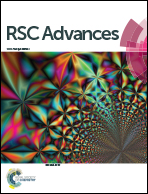N-(3-(Dimethyl benzyl ammonio)propyl)alkanamide chloride derivatives as corrosion inhibitors for mild steel in 1 M HCl solution: experimental and theoretical investigation
Abstract
The effects of N-(3-(dimethyl benzyl ammonio)propyl)lauramide chloride (DMBL), N-(3-(dimethyl benzyl ammonio)propyl)myristamide chloride (DMBM) and N-(3-(dimethyl benzyl ammonio)propyl)palmitamide chloride (DMBP) on the corrosion of mild carbon steel in acidic medium (1.0 M HCl) were investigated using weight loss and electrochemical measurements. The inhibition efficiency was found to be hydrophobicity- and temperature-dependent. Increasing the hydrophobic chain length increased the efficiency due to greater adsorption on the metal surface. The inhibition efficiency is directly proportional to the tested temperature. The electrochemical polarization study revealed that the tested cationic surfactants are mixed-type inhibitors. The Villamil adsorption isotherm is the better-fitted model for describing the adsorption process on the selected steel in 1.0 M HCl medium. The change in the free energy of adsorption of the synthesized cationic surfactants on the metal surface indicates that the adsorption process is chemisorption. Double-layer capacitance values obtained from electrochemical impedance spectroscopy decrease in the presence of the synthesized surfactant. Quantum chemical calculations support the experimental data and the adsorption on the metal surface.


 Please wait while we load your content...
Please wait while we load your content...